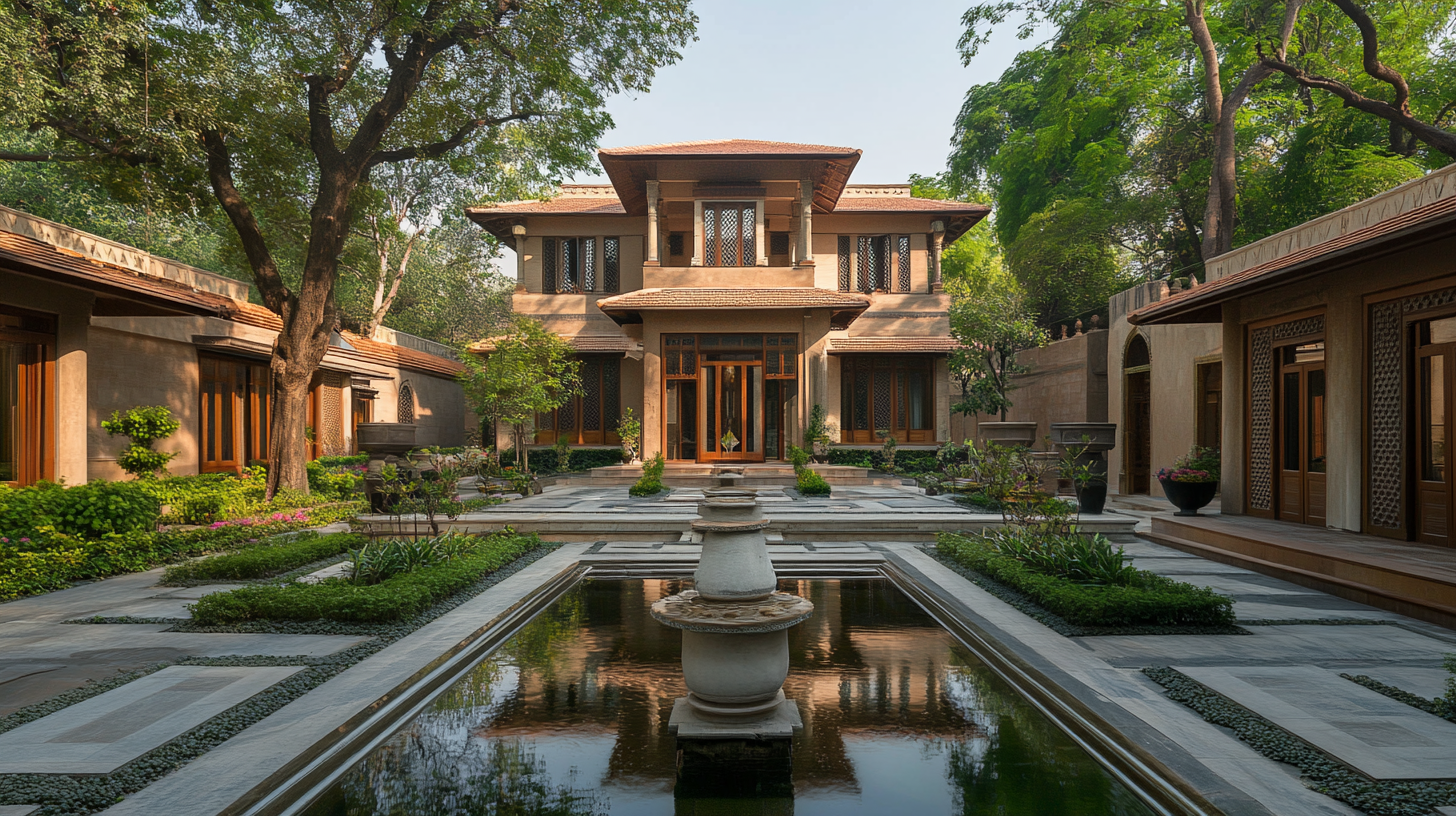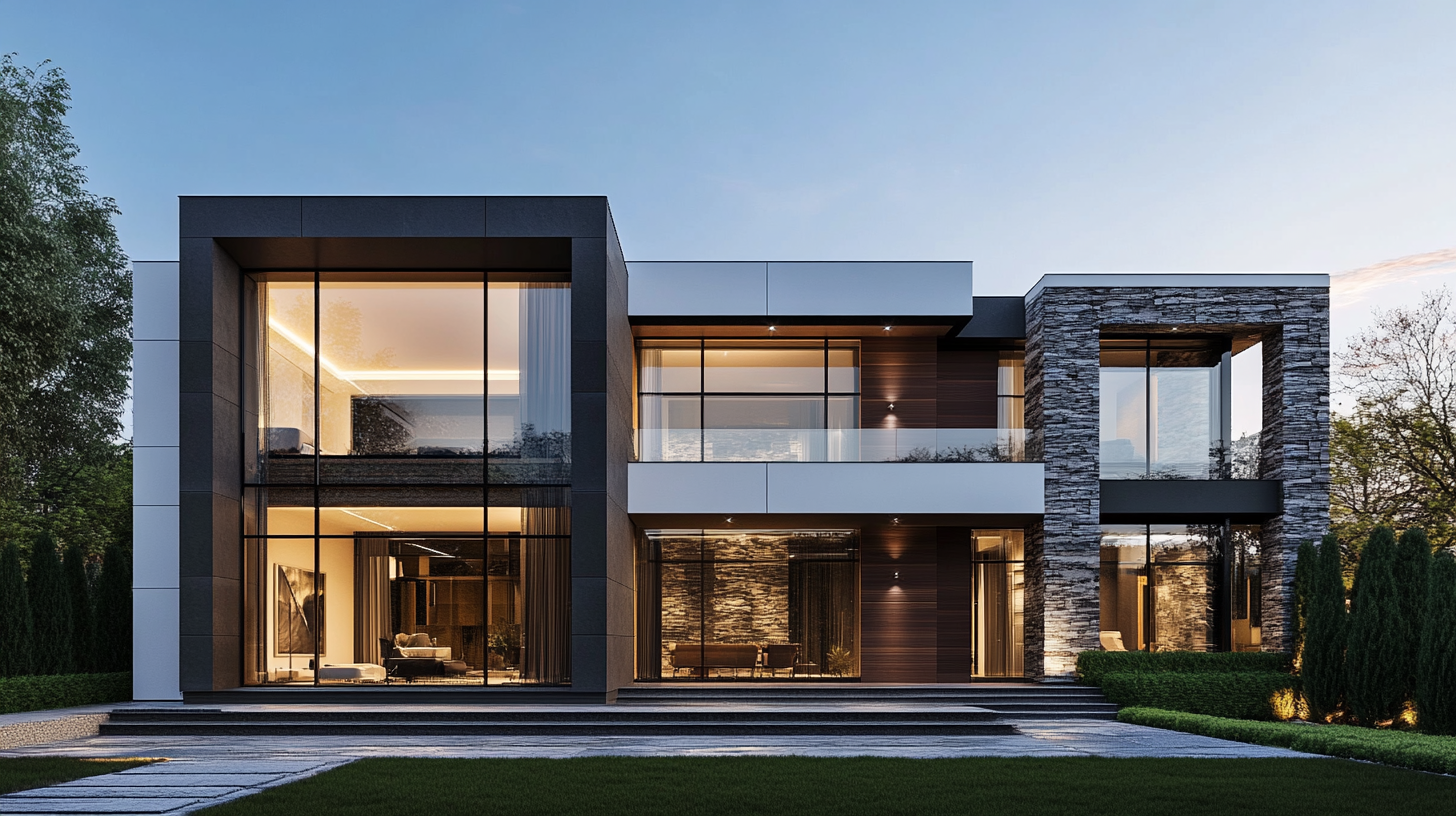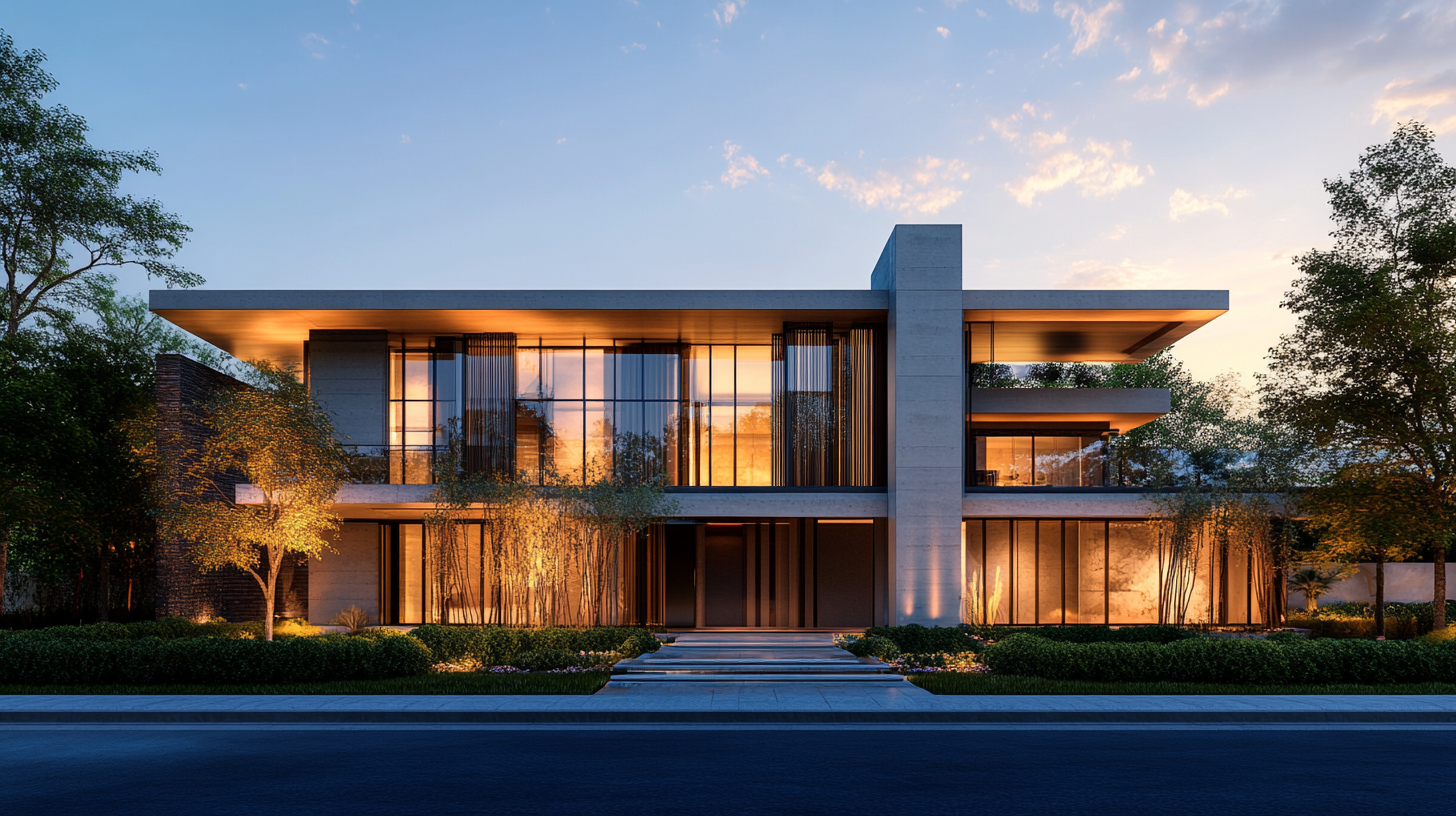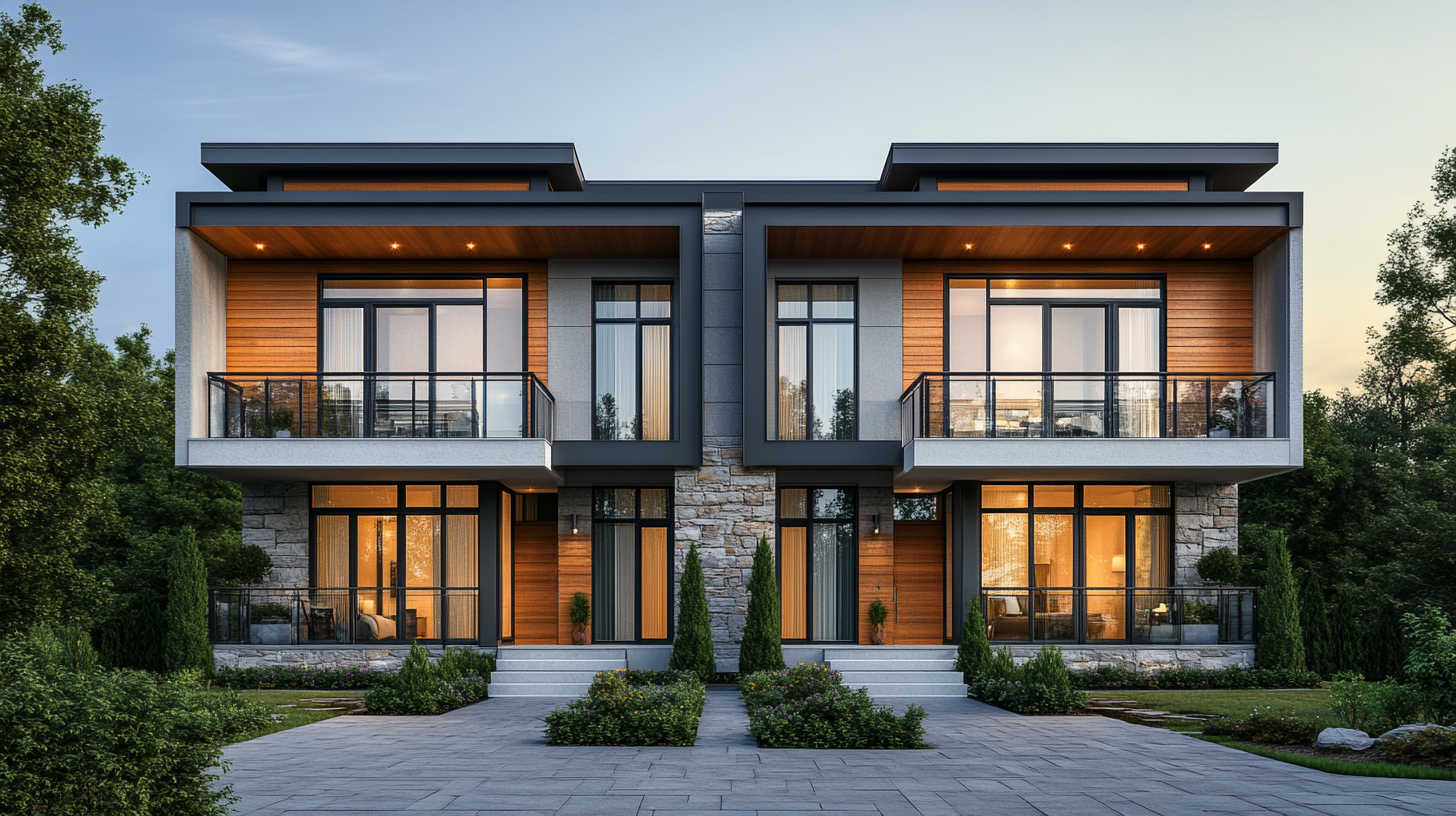
Traditional Indian Garden Elements in Modern Architectural Projects
Integrating tradition with modernity is an evolving trend in architecture and design, offering a unique balance that speaks to both heritage and contemporary aesthetics. One such timeless treasure lies in traditional Indian gardens, which are not just about plants and landscaping but represent a deep sense of harmony, spirituality, and functionality.
For architects, landscape designers, and homeowners, these garden elements provide a great opportunity to bring culturally rooted beauty into modern architectural spaces. Whether you’re planning a minimalist courtyard or transforming an expansive outdoor area, these elements can inspire design projects that marry the past with the future.
This blog will explore the cultural significance of traditional Indian garden elements, notable features, and how they can be beautifully adapted to contemporary projects. You’ll also learn practical ways to incorporate these elements into your designs and review case studies from inspiring architectural works.
Key Elements of Traditional Indian Gardens
True to their cultural roots, Indian gardens represent more than just aesthetics. They are a reflection of balance, spirituality, and human connection with nature. Here are the defining elements of these traditional landscapes:
1. Water Features
Water is an integral part of Indian gardens, symbolizing purity and tranquility. From Mughal charbaghs featuring symmetrical, water-fed canals to intricately designed stepwells (baolis), water plays both a functional and aesthetic role in Indian landscaping.
Examples:
- Mughal Gardens at Rashtrapati Bhavan, New Delhi showcase the grandeur of water channels punctuated by fountains that create a soothing ambiance.
- Rajasthan’s Stepwells, like Chand Baori, highlight the architectural brilliance of manipulating water in arid regions while offering visual drama.
2. Plant Selections
Traditional Indian gardens are abundant with meaningful plant choices that contribute not only to beauty but also to their practical and medicinal value. Carefully chosen trees, flowers, and shrubs ensure shade, fragrance, and biodiversity.
Key Plants:
- Lotus & Water Lilies for ponds
- Neem, Ashoka, and Banyan Trees for shade and symbolism
- Jasmine and Champa (Plumeria) for divine fragrance
3. Spatial Layouts
Indian landscaping reflects geometric precision and balance. Spaces are divided into symmetrical sections, guided by vastu principles that maintain harmony between man and the environment. Pavements, pathways, and courtyards introduce functionality, while shaded pavilions provide peaceful spots to relax.
Notable Design Patterns:
- Charbagh layouts with four quadrants separated by water channels
- Centralized open courtyards in South Indian mansions
4. Pavilions and Sculptures
Ornamental structures such as gazebos, pavilions, and temples are common features of traditional Indian gardens. They double as resting spaces and focal points that captivate visitors while adding a sense of character.
5. Colorful Patterns and Textures
Traditional Indian gardens often incorporate vibrant tiles, intricate carvings, and patterns that complement the natural surroundings. Think of framed corridors or jalis (perforated stone screens) that add both artistic value and functionality by diffusing light beautifully.
Modern Adaptations of Indian Garden Elements
Adapting traditional designs into modern spaces involves blending these timeless elements creatively while keeping functionality and sustainability in mind. Here’s how you can do it:
1. Minimalist Water Features
Drop the elaborate fountains for sleek, geometric water troughs or tranquil reflective pools. Combine them with LED lighting for nighttime aesthetics while maintaining their calming presence.
2. Low-maintenance Plant Choices
For busy homeowners, choose drought-resistant native species that need minimal upkeep while preserving the traditional vibe. Vertical gardens using native climbers are a great way to incorporate greenery in smaller spaces.
3. Indoor Integration
Traditional Indian courtyard vibes can be replicated indoors with indoor water features, potted plants, and skylights that fill spaces with natural light. This minimizes the environmental impact while keeping traditional design alive indoors.
4. Functional Zoning Using Pavilions
Modern pergolas or shaded seating areas can provide comfort in compact spaces while borrowing from traditional Indian architectural ideologies. These can double as dining lounges or reading nooks.
5. Eco-friendly Materials
Use locally sourced, eco-friendly materials like sandstone, terracotta, or bamboo to ensure sustainability while achieving that quintessential rustic charm.
Case Studies of Successful Integration
1. The ITC Grand Bharat, Gurugram
This luxury hotel skillfully incorporates Mughal-inspired garden layouts combined with contemporary luxury, highlighting water fountains, symmetrical planning, and lush plantings.
2. Amita Mahal Residence, Chennai
Designed by one of the top architectural firms in Chennai, this residence integrates traditional garden courtyards with modern interiors. The use of native plants and open verandas reflects a seamless balance between past and present.
3. Auroville Bamboo Center, Tamil Nadu
A collaborative effort from architectural and interior design companies in Chennai helped create spaces within nature that echo traditional Indian pavilions using bamboo structures and water features.
4. Umaid Bhawan Palace, Jodhpur
The garden within this royal structure perfectly embodies traditional elements such as intricate jalis, lotus-filled ponds, and sculptural accents.
Practical Tips for Implementing Traditional Garden Elements in Projects
Venturing into this unique design path? Here are actionable tips to get started:
- Collaborate with Experts: Engage a top architecture company in Chennai or landscape designers experienced in traditional Indian elements.
- Plan for Sustainability: Choose native plants and eco-friendly materials to ensure minimal environmental impact.
- Leverage Technology: Utilize modern irrigation systems to efficiently manage water features.
- Adapt to Your Space: Even small balconies can incorporate Indian-inspired planters, lattice screens, or hanging water features.
- Stay True to Local Ideals: Work with an interior design company in Chennai or your nearest city to integrate cultural symbolism through art and accents.
Why Traditional Indian Gardens Are Perfect for Modern Projects
By integrating Indian garden elements, architectural and interior design projects are enriched with cultural significance, aesthetic appeal, and ecological benefits. Whether you’re a homeowner looking to elevate your living space or a designer seeking something timeless yet modern, there’s so much to gain by taking inspiration from India’s heritage.
Are you looking for expert help? Collaborate with Top Architecture Company in Chennai or experienced interior designers to transform your garden into an oasis that pays homage to tradition while staying contemporary. Bring culture, elegance, and serenity to every project.



